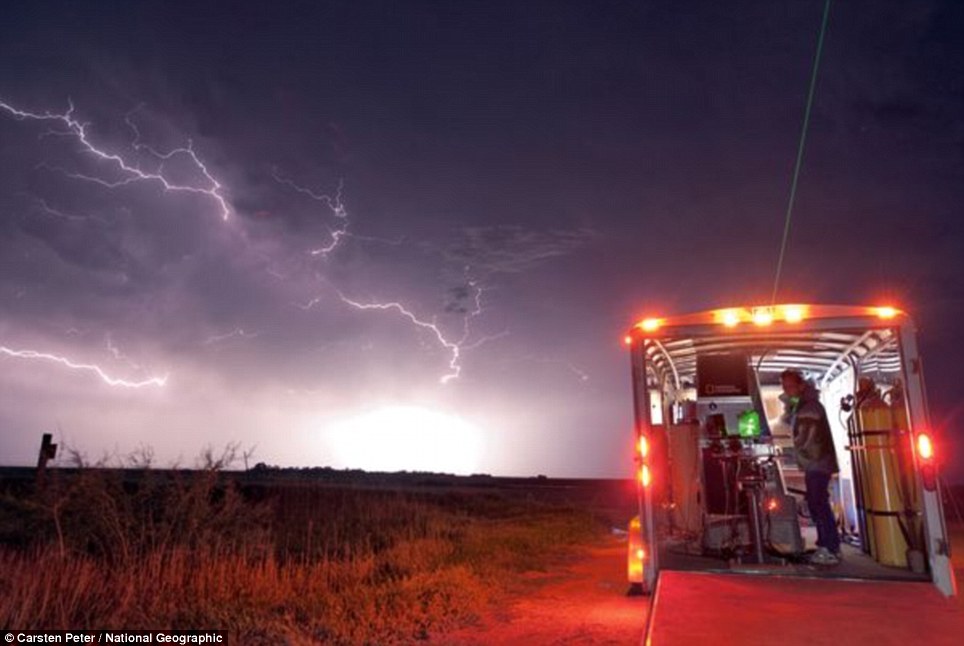Project: Chasing a Thundercloud
Kick Off Questions:
- What direction does $\vec{r}_{source}$ point? What direction does $\vec{r}_{obs}$ point? What direction does $\vec{r}_{sep}$ point? Draw all of these on a diagram.
- What is the equation for electric field? What are the variables and are they vector or scalars?
- What is the equation for electric potential? What are the variables and are they vector or scalars?
- What direction should the electric field point for positive charges? What direction should it point for negative charges?
Main Problem
You are part of a secret organization called S.P.A.R.T.A.N. that investigates strange phenomena. You and your team have been sent to investigate abnormal thunderclouds that have been occurring near the town of Lakeview. An advance party from your organization has established a base of operations in Lakeview called Stormchaser HQ. You grab your handy-dandy high voltage probe (like this one) and radio, then drive 250 m from headquarters until you are directly under the storm cloud. Thankfully, your team already calibrated the voltmeter to 0 V when the storm cloud was very far away.
From your training, you know that if the electric field is bigger than 3 MV/m (also called the dielectric breakdown of air), the air will become a conductor and lightning will strike. You need to determine if a) you are safe from lightning under the thundercloud and b) if the lightning rod on top of the storm-chaser headquarters will be hit. The master storm chaser and part-time civil engineer, Edric Storm, tells you that the storm-chaser headquarters is 200 m tall.
Learning Goals - Project 1A:
- Understand what the $\vec{r}$ is, how to calculate it, and how it relates to $\hat{r}$
- Become familiar with the ideas of electric field and electric potential
- Explain the differences between electric field and electric potential
- Explain how electric field and electric potential are related
Wrap Up Questions:
- How big is 1 Coulomb of charge? (How much charge is on a single electron, in a lightning bolt, on your socks when you rub the on carpet?)
- What would change about your solution if the thundercloud were the opposite charge (positive instead of negative or vice versa)? Does $r_{sep}$ change? Does the E-field change? Does the electric potential change?
- What are the similarities & differences between electric field and electric potential?
- What sort of assumptions did you make in this problem? How realistic are they?
- What would change about your solution if you picked a different origin point? Pick a different origin & write out the calculation for the electric field on top of HQ.
